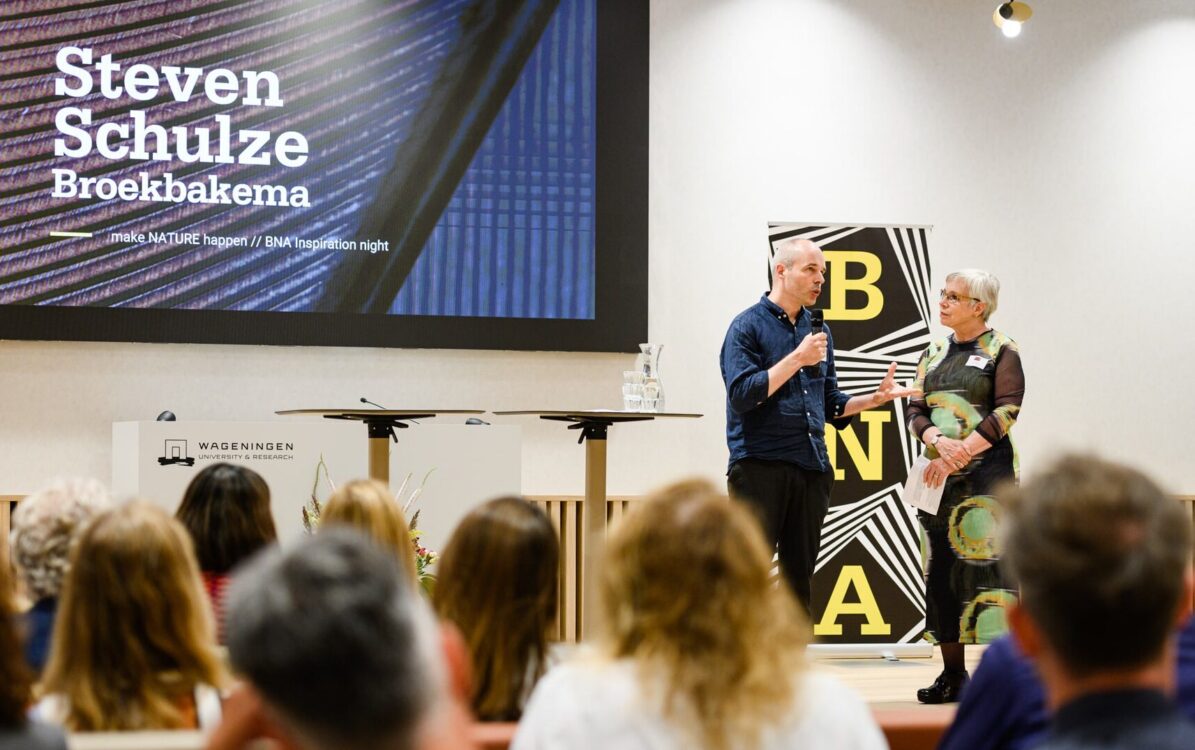
Build nature-inclusive? Lets do it!
5 July 2022
Bird box, sedum roof or shelter: how does a building actually contribute to its natural environment? Colleague and architect ing. Steven Schulze shared his vision during “Make Nature Happen. A mini-symposium of the BNA (Dutch Architectural Association) on the necessity and impact of nature-inclusive design. Steven was able to show the audience on the spot how that works out in practice. The meeting took place at Omnia on the green campus of Wageningen University of Research, a brand new building with an eye for nature, designed by colleague Erik van Eck.
Connection with nature
How do you make an impact with nature-inclusive building? Who can pick up the baton? And why exactly now? Steven left no misunderstanding, biodiversity in the Netherlands is in a bad way. The diversity of native plant and animal species is declining rapidly, especially due to urbanization; “As a person and an architect, this concerns me. We know that a healthy living and working environment requires connection with nature. This should also be central to the development of a building.’
Nature-inclusive building
More architects can take the lead, Steven pressed the audience. And a different mindset is needed among both architects and clients: ‘You see that not everyone is familiar with the importance and possibilities of nature-inclusive building. Inspiration or knowledge development is important and especially architects fit that pioneering role very well. Nature-inclusive building is designing for and with nature. A good design creates the preconditions for nature to flourish. Making such considerations at the beginning of each design process is crucial.
Simple measures
That is not at all complex, Steven continues “Look at this building, Omnia has a sedum roof that provides food for insects and is a stepping stone for the migration of animals in the city. The wadis under the building provide natural cooling. The incidence of natural light and height provides the perfect conditions for growing plants indoors. All in all, very low-key measures with hugely positive effects on the people in the building and the nature around it. In my opinion, we should put nature inclusivity on the agenda as standard and see what we can do for each assignment.
Inspiring examples
‘Make Nature Happen’ showed how many insanely beautiful initiatives there are for more biodiversity. Nadine Galle – ecological engineer and technologist – talked about ‘The internet of nature’. The interaction between plants is not only measurable, but can also be converted into language that people can understand. It turns out that a signal from a sensor in the ground can be translated into a Twitter message, generating enthusiastic reactions and wonderful opportunities. The better we understand nature, the better we can “green” cities in a qualitative way. Architect RO&AD captivated the audience a little later with his bird observatory. Very sustainably built and yet with an eye for aesthetics that brings man and nature closer together again.
Integral approach
The crux lies in the integral approach, everyone present agreed. Involve outside experts and do so as early as possible, for example with an ecologist who formulates the opportunities, ambitions and coherence. This should not stop architects from gaining basic knowledge themselves. And the construction industry as a whole can also contribute to biodiversity restoration. ‘A building can simply contribute an awful lot to its environment, even if nature-inclusive construction is still in its infancy. Inspiring evenings like this give good energy to get to work!’ said Steven.
In any case, we are inspired to continue working on this theme. Thank you BNA for bringing together so many enthusiastic people and inspiring stories!
Photo: Just Justa Photography
Event: make NATURE happen // BNA Inspiration Night